Reader Story: Maritime Collegeby Francois, Dieppe, France
Last year I attended a maritime college to qualify for working on ships.
Besides an intense academic curriculum, the college is also keen on getting us physically fit for life at sea. Every weekday morning before breakfast we did our fitness swim training in the pool, which I really enjoyed.

After the shower we put our swimming clothes on.
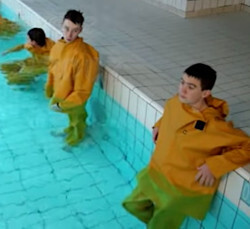
Looking cool in the pool.
Morning swims include endurance and strength training for about an hour, like lane swimming, sit-ups and push-ups. We were told to always swim in seaman's rain suits which felt good and comfortable in the water, but are harder to swim in so we get stronger.
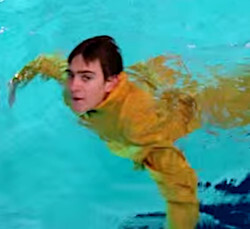
These swimsuits get you fit.

Swimming takes effort.
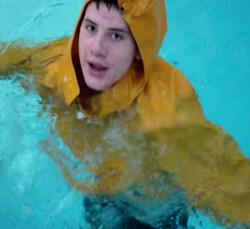
Hood up reduces drag.
Safety Training
Three times a week we practiced various aspects of sea survival and safety training in the pool. These sessions were designed to prepare us for various emergency situations at sea.
We covered a range of skills including life raft deployment, clothes inflation for buoyancy, rescue towing, jumping from heights, and swimming underwater.
We had to wear the usual rain suits on top of two layers of clothing, plus boots. These clothes felt comfortable and good to wear in water but proved challenging to swim in due to their waterlogged weight.
This helped simulate real-life scenarios where every second counts.
Despite these challenges, I found the experience enjoyable overall.
It was good fun, but tough.
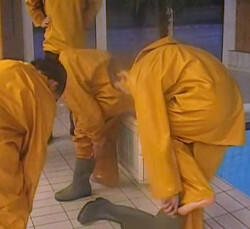
Safety training with boots.
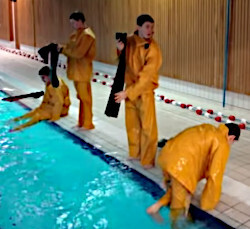
Using boots as floats.
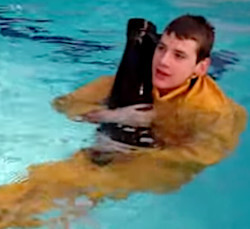
Boot as buoyancy aid
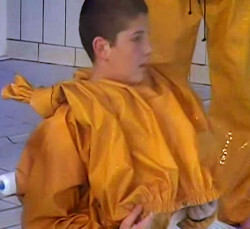
Trousers as buoyancy aid
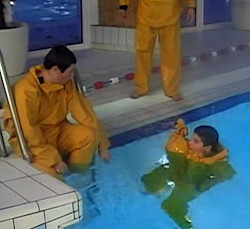
Trouser inflation
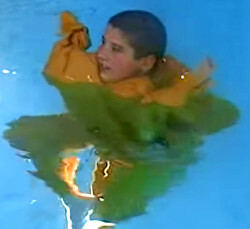
Floating is always fun.
Continued Training
After completing my training at maritime college, I continued to stay fit by practicing swim training with friends in our local pool. This not only helped maintain physical fitness but also allowed us to simulate real-life scenarios that we might encounter on ships.
Swimming in clothes has always been part of my fitness training since college. This adds an extra layer of realism to the exercises, using different types of clothes from casual attire to heavy-duty gear.
I believe it is essential for all ship workers to participate in regular safety training and swim fitness sessions. Many of my friends now work for the local ferry company and come home every day. Our training continues in the local pool to maintain physical fitness while also staying prepared for emergency situations at sea.
Conclusion
My survival swim training at the maritime college was an essential part of preparing me for life on ships. The regular morning sessions helped improve my swimming skills while wearing seaman's clothes, which are designed for safety and comfort on board and in water. The safety training sessions during my maritime college experience were invaluable but also fun.
Recommendations from Marine College
- All maritime college students should continue their sea survival and safety training after graduation.
- Regular survival swimming sessions
can help improve overall physical fitness and mental alertness,
while also staying prepared for emergency situations at sea.
- Incorporating a variety of clothes into these exercises is highly recommended, even though they are challenging to wear while swimming. Seaman's rain suits adds an extra layer of realism, making the training more effective.
By following these recommendations, college students will maintain good fitness levels
and be better equipped with the necessary skills and knowledge
to face any challenges that may arise in their future careers as ship workers.